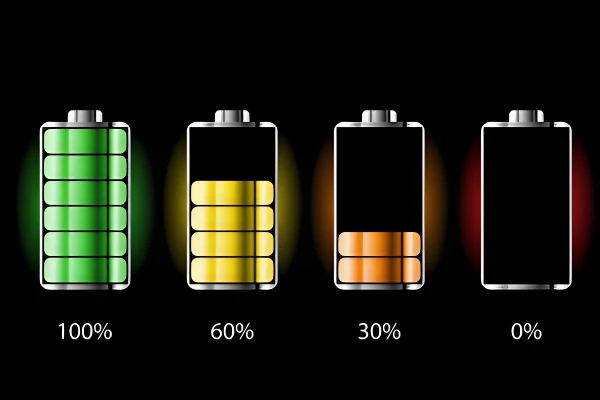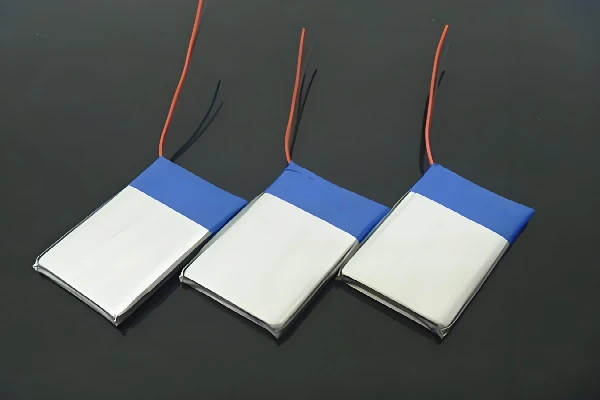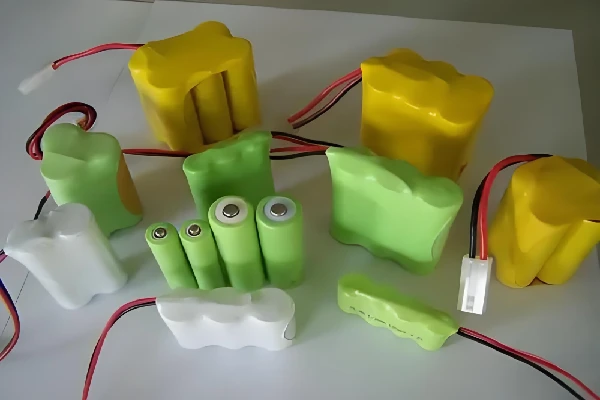Rechargeable batteries are integral to our modern lifestyle, powering everything from smartphones to electric vehicles. With so many types available, you might wonder which rechargeable battery lasts the longest. Let’s explore this topic in depth, looking at the different types of rechargeable long lasting batteries, what influences their lifespan, and which one stands out in terms of longevity.

Part 1. Rechargeable battery types
There are several types of rechargeable batteries, each with unique characteristics and suitable applications. Understanding these differences can help you choose the right long-lasting batteries for your needs.
1. Lithium-ion (Li-ion) Batteries
- Characteristics: Lithium-ion batteries are widely used in consumer electronics such as smartphones, laptops, and cameras. They are known for their high energy density, meaning they can store a lot of energy relative to their size and weight.
- Applications: Ideal for portable electronics, electric vehicles, and renewable energy storage.
- Advantages: Lightweight, high energy density, relatively low self-discharge rate.
- Disadvantages: Sensitive to high temperatures, risk of thermal runaway if damaged or improperly charged.
2. Lead-acid Batteries
- Characteristics: Lead-acid batteries are one of the oldest types of rechargeable batteries. They are commonly used in automotive applications, backup power systems, and renewable energy storage.
- Applications: Car batteries, uninterruptible power supplies (UPS), solar energy storage.
- Advantages: Reliable, capable of high surge currents, relatively low cost.
- Disadvantages: Heavy, requires regular maintenance, and has a shorter lifespan than other types.
3. Nickel-metal Hydride (NiMH) Batteries
- Characteristics: NiMH batteries are a safer and more environmentally friendly alternative to nickel-cadmium (NiCd) batteries. They are used in various applications, from household electronics to hybrid vehicles.
- Applications: Rechargeable batteries for household electronics, hybrid vehicles, and electric tools.
- Advantages: Moderate energy density, safer than NiCd, less prone to memory effect.
- Disadvantages: A higher self-discharge rate compared to Li-ion can generate heat during charging.
4. Lithium Iron Phosphate (LFP) Batteries
- Characteristics: LFP batteries are a subtype of lithium-ion batteries but with enhanced safety and stability. They have a lower energy density than traditional Li-ion batteries but offer a significantly longer lifespan.
- Applications: Electric vehicles, solar energy storage systems, and power tools.
- Advantages: Very long lifespan, high thermal and chemical stability, safer than other Li-ion types.Disadvantages: Lower energy density, higher initial cost.
Part 2. What determines the battery cycle life?
Several factors influence the cycle life of a rechargeable battery. Understanding these can help you maximize the lifespan of your long lasting batteries.
1. Charge and Discharge Cycles
A charge cycle is a complete charge and discharge of the battery. Each battery type has a limited number of cycles it can undergo before its capacity significantly degrades. Regularly cycling the battery affects its overall lifespan.
2. Temperature
Extreme hot and cold temperatures can degrade battery performance and lifespan. High temperatures can accelerate chemical reactions inside the battery, leading to capacity loss, while low temperatures can cause reduced efficiency and performance.
3. Usage Patterns
How you use and charge your battery influences its lifespan. Frequent deep discharges and overcharging can significantly reduce battery life. Keeping the battery within a moderate state of charge (e.g., between 20% and 80%) can prolong its life.
4. Maintenance
Proper maintenance practices, such as avoiding full discharges and ensuring batteries are stored in a cool, dry place, can extend their lifespan. Regularly checking and balancing the cells in a battery pack can also help maintain longevity.
5. Battery Chemistry
Different battery chemistries have inherent differences in lifespan. For instance, Li-ion batteries generally have a shorter lifespan than LFP batteries, designed for longevity and stability.
Part 3. Which rechargeable battery lasts the longest?
To determine which long-lasting batteries last the longest, let’s examine the lifespans of the four main types and compare their characteristics.
1. Lithium-ion (Li-ion) Batteries Lifespan
Typical Lifespan: 300 to 500 cycles.
Li-ion batteries are favored for their high energy density and lightweight nature. However, they tend to degrade over time, even if not used, due to chemical reactions occurring within the battery.
2. Lead-acid Batteries Lifespan
Typical Lifespan: 200 to 300 cycles.
Lead-acid batteries are robust and reliable but have a relatively short lifespan. To maximize their longevity, they require regular maintenance, such as ensuring proper charge levels and avoiding deep discharges. Sulfation, a process where lead sulfate crystals form on the battery plates, can significantly reduce their lifespan if not managed properly.
3. Nickel-metal Hydride (NiMH) Batteries Lifespan
Typical Lifespan: 500 to 800 cycles.
NiMH batteries offer a moderate lifespan and are less prone to the memory effect that plagued older NiCd batteries. However, they suffer from a higher self-discharge rate, meaning they lose charge more quickly when not in use. Proper charging practices can help extend their life.
4. Lithium Iron Phosphate (LFP) Batteries Lifespan
Typical Lifespan: 2000 to 5000 cycles.
LFP batteries are known for their exceptionally long lifespan and high safety. They are stable at high temperatures and less prone to thermal runaway compared to other Li-ion batteries. While they have a lower energy density, their longevity and stability make them ideal for applications where long-term reliability is crucial, such as in electric vehicles and renewable energy storage systems.
| Battery Type | Typical Lifespan (Cycles) | Key Features |
|---|---|---|
| Lithium-ion (Li-ion) | 300 to 500 | High energy density, lightweight, prone to degradation |
| Lead-acid | 200 to 300 | Heavy, robust, requires maintenance, shorter lifespan |
| Nickel-metal Hydride (NiMH) | 500 to 800 | Moderate energy density, higher self-discharge |
| Lithium Iron Phosphate (LFP) | 2000 to 5000 | Long-lasting, high stability, lower energy density |
Part 4. Is the longer cycle life of a rechargeable battery always better?
While a longer cycle life is generally desirable, it’s not the only factor to consider when choosing a long lasting battery. Here are some key points to keep in mind:
1. Application Needs
Considerations: The best battery for your application depends on more than just lifespan. For instance, if you need a lightweight, portable device battery, a high energy density like that found in Li-ion batteries might be more important than a long cycle life.
2. Cost
Considerations: Batteries with longer lifespans, such as LFP batteries, can be more expensive upfront. Evaluate whether the longer lifespan justifies the higher initial cost based on your usage and budget.
3. Performance
Considerations: Longer-lasting batteries might have lower energy densities. This means they can store less energy for their size, which could be a drawback in applications where space and weight are critical factors.
4. Environmental Impact
Considerations: Some batteries are more environmentally friendly than others. For example, NiMH batteries are less toxic than lead-acid batteries. Choosing a battery with a longer life can also reduce waste and environmental impact over time.
Part 5. Conclusion
In conclusion, if you’re looking for a rechargeable battery with the longest lifespan, Lithium Iron Phosphate (LFP) batteries are the clear winner. They offer an impressive cycle life of 2000 to 5000 cycles, making them ideal for applications where longevity is paramount. However, balancing lifespan with other factors such as cost, performance, and specific application needs is important. Each long-lasting battery type has its advantages and disadvantages, and the best choice will depend on what you prioritize most in your battery use. By understanding the different types of rechargeable batteries and what affects their lifespan, you can make an informed decision that best suits your needs.
관련 태그:
더 많은 기사

The Ultimate Guide to Remove Battery Corrosion
Learn how to remove battery corrosion, prevent future damage, and maintain battery health with our detailed guide.
How to Properly Discard Batteries and Protect the Environment?
Batteries power daily essentials but improper disposal poses risks. Learn to discard them responsibly for sustainable living and environmental protection.
Battery Manufacturing Process: A Comprehensive Guide
The battery manufacturing process creates reliable energy storage units from raw materials, covering material selection, assembly, and testing.
5 Creative Ways to Battery Organiser: Say Goodbye to Clutter
Tired of searching for the right battery? Discover five creative ways to organize batteries and keep your home clutter-free with this efficient storage guide.
Everything You Need to Know About 3.7v Battery
Discover the ins and outs of 3.7V batteries, including types, capacities, and applications. Learn how to choose the best one for your needs.





